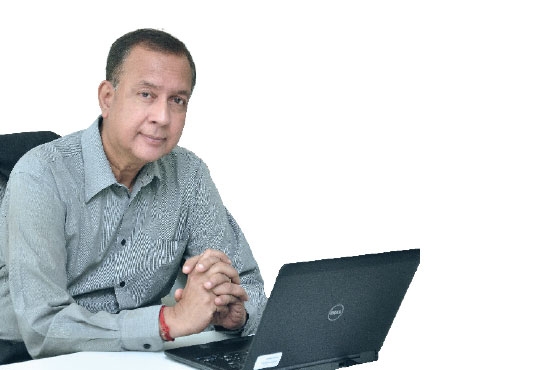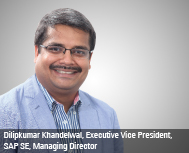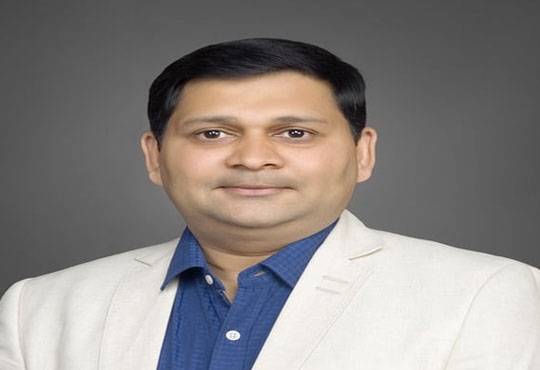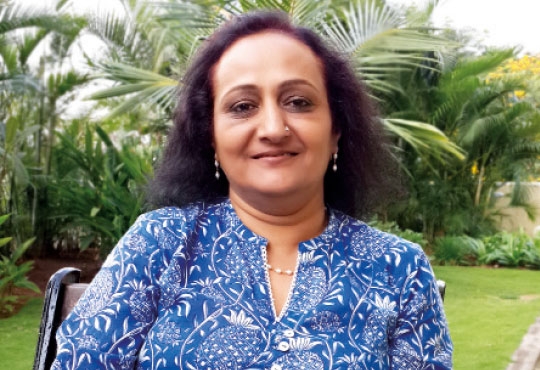
CIOTechOutlook >> Magazine >> April - 2015 issue
THE HYPERCONNECTED WORLD How the emergence of a networked economy will redefine the future enterprise!
By
 The evolution of social networks has disrupted the way our preferences are formed. Social media platforms extend to us an opportunity to evaluate our preferences, share our ideas and finalize on a decision. As we further evolve, machines and connected devices will be a part of this network bringing to us more meaningful information that enables us with more decision-making. The Internet of Things (IoT) will forever change our personal and professional lives. Embedded intelligence in a growing network of connected devices will increasingly connect people and businesses to everything else – and become the very fabric of a networked economy.
The evolution of social networks has disrupted the way our preferences are formed. Social media platforms extend to us an opportunity to evaluate our preferences, share our ideas and finalize on a decision. As we further evolve, machines and connected devices will be a part of this network bringing to us more meaningful information that enables us with more decision-making. The Internet of Things (IoT) will forever change our personal and professional lives. Embedded intelligence in a growing network of connected devices will increasingly connect people and businesses to everything else – and become the very fabric of a networked economy. With the adoption of IoT we will see how the network of devices will further transform our everyday life and make it smarter by establishing an intelligent network of processes, objects, information and people. By 2020, it is expected that there will be 50 billion connected devices communicating through the Internet; ranging from connected coffee makers, cars, or sensors on cattle to connected machines in a production plant. These connected devices provide data that offers new insights, develop their own intelligence and can advise customers about optimal ways to put them to use. This will revolutionize consumer habits and the way business is done. Companies who are agile and able to challenge their status quo will reap the benefits from this new thinking.
ENABLE, OPTIMIZE, CONNECT
It is extremely important for organizations to embrace the sweeping changes that IoT will usher in. Towards this, the first step is to ensure that their systems become ready to be a part of the network. This involves making their applications device ready and optimizing them to handle data from heterogeneous sources. Managing the numerous digital assets could be a nightmare if not done in a structured way. As the number of devices grows, Big Data comes into play and hence it is important to have a robust platform in place to handle large amounts of data and derive intelligence from it.
Embracing the internet of things implies connected people, machines and things in order to enable bi-directional flow of information and enable real time decision. For instance, the least disruptive solutions like leveraging geo-spatial capabilities from the devices and extending location specific information through applications across sales, marketing and supply chain activities could be a starting point for the organizations. Real time information along with transactional capabilities could provide additional values to the business applications at this stage. The long-term strategy is to build a fully connected enterprise systems that will connect across organizations through different functions and at the same time create new business models never possible before.
,b>PROCESS, PREDICT, TRANSFORM,
M2M (machine to machine) activities have increased in the utilities, transportation, healthcare, and government verticals. Within these industry verticals, M2M services are delivering value in both developed and emerging markets in areas such as telemetry, data collection, remote control and monitoring, robotics, status tracking, road traffic control, offsite diagnostics and maintenance, security systems, logistics services, fleet management, telemedicine, and other functions.
We are already witnessing tremendous improvements in the way health sector is embracing the usage of multiple sensors to monitor patients’ health remotely and prescribe medications. Also we have seen extensive use cases for ingestible sensors, which are made of ingredients, found in food and activated upon digestion to transmit data that will help both patients and doctors.. We are going to see many such examples in the future and convergence of similar ideas could revolutionize the way our industry works.
The growing array of convenience and efficiency that interconnected devices bring to our daily life is immense and it continues to attract interest from consumers and markets across. In order to create value, we need to define business ecosystems that leverage the potential of these connected devices. In the enterprise, we could draw many analogies for the efficient use of intelligent devices. For example, in a plant we could track different machines that are equipped with intelligent sensors. These sensors could capture data regarding the operations and send it back to the backend system for processing from where insights regarding the operations can be generated and more optimization in operations can be generated. The data could further be leveraged to conduct predictive maintenance for machines before the problem gets reported and thus bring down the time needed for critical maintenance.
As IoT progresses with offers of unmatched opportunity, enterprises need to look out for collaborations that can fill in the gaps. It is important to have systems integrated and devices connected to the network to leverage the full potential of this phenomenon. The existing enterprise systems should be redesigned to make use of this new opportunity and should extend Big Data capabilities for increased data processing. The biggest mistake most companies are making is their attempt at fine tuning IoT to their existing business processes which in turn results in a fairly complicated business model. Companies should rethink their existing businesses to leverage the power of IoT and create new opportunities with IoT as a true enabler.
The real purpose of this is to establish highly intelligent and autonomous business systems with minimal user intervention and simplified business processes. Customers may not buy an idea if a high set up time is tagged along or if a product if the user documentation is highly complex. In conclusion, the pre-requisite for an efficient IoT implementation is simplified business processes, minimal end user training /data entry and effective data processing.
CXO Insights
Virtualization: A Smooth Transition to Cloud...
By Murali Ramalingam, Country Manager, India, Ixia
Preparing for the Next Unforeseen Disruption
By Sushil Goyal, Co-founder & MD, Rahi Systems
Uncovering New Possibilities for an Improved...




